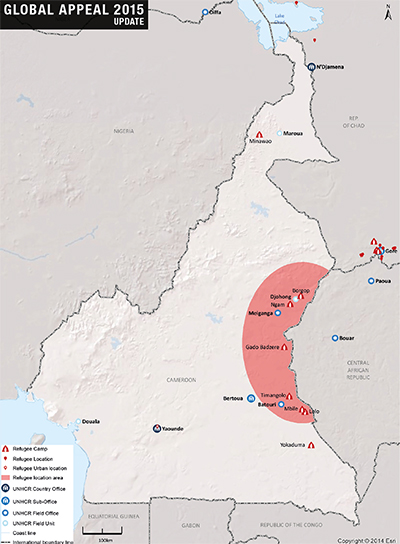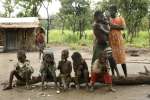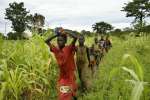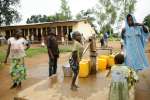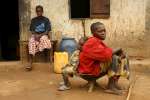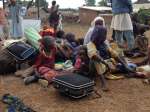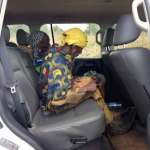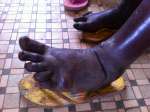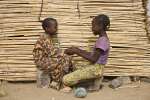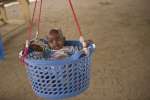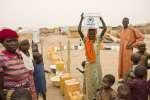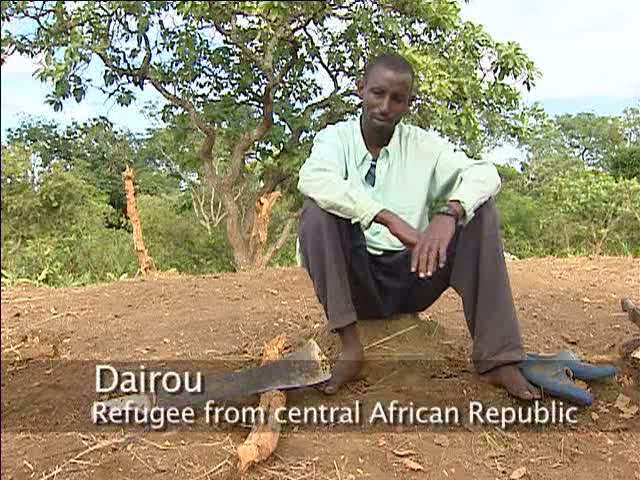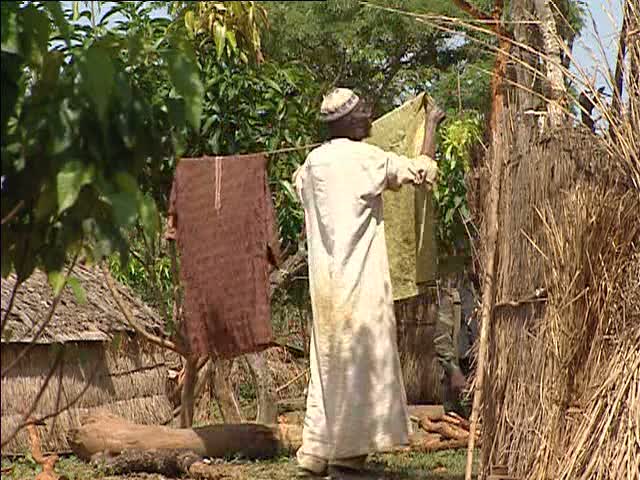Home > Where We Work > Africa > Central Africa and the Great Lakes > Cameroon
2015 UNHCR country operations profile - Cameroon
| Overview |
Working environment
-
Cameroon maintains an open-border policy for asylum-seekers and is signatory to all major legal instruments on refugees, including the 1951 Refugee Convention and the 1969 OAU Refugee Convention. Moreover, Cameroon adopted a law defining the legal framework for refugee protection in July 2005, which went into force in November 2011.
-
Continued regional instability means Cameroon has been receiving refugees and asylum-seekers from neighbouring countries, mainly from the Central African Republic (CAR) and Nigeria. As of August 2014, Cameroon was hosting more than 240,000 people of concern to UNHCR.
-
Cameroon hosts the largest number of Central African refugees. Most are spread over at least 314 sites and villages across the East and Adamaoua regions. The extensive CAR border presents a challenge for humanitarian actors on the ground, with more than 30 entry points and an operational area of 50,000 square kilometres. This is further aggravated by poor road conditions, making access difficult.
-
Due to the crisis in Nigeria, Cameroon has witnessed an influx of Nigerian refugees since May 2013. The volatile security situation at the border, including continued incursions by armed groups from Nigeria into Cameroon, poses serious risk of targeted violence, robbery or kidnapping.
-
The Government provides protection and asylum for people of concern and has allocated land for seven refugee sites in the East and Adamaoua regions, as well as Minawao refugee camp in the Far North region. It also provides armed escorts for refugees and humanitarian actors in operational areas and facilitates access to local schools and health centres for refugees, with UNHCR support.
People of concern
In 2015, people of concern in Cameroon will include: new refugees from the CAR, who since December 2013 have been fleeing in large numbers following waves of violence and political instability; CAR refugees who fled the north-west region of the CAR between 2006-2010 due to high levels of banditry and other criminal acts and are currently residing in 308 villages throughout the East and Adamaoua regions; and Nigerian refugees fleeing fighting between insurgents and government forces. Before the latest influx of Nigerian refugees, Cameroon hosted more than 3,000 Nigerian refugees who had left their country due to inter-ethnic conflicts and since 2003 have settled in the Adamaoua, south-west and Northwest regions, as well as urban refugees and asylum-seekers from 35 countries, including the CAR, Chad, the Congo, Côte d'Ivoire, Nigeria, and Rwanda.
| UNHCR 2015 planning figures for Cameroon | |||||
|---|---|---|---|---|---|
| Type of population | Origin | January 2015 | December 2015 | ||
| Total in country | Of whom assisted by UNHCR |
Total in country | Of whom assisted by UNHCR |
||
| Total | 231,610 | 223,460 | 277,110 | 268,020 | |
| Refugees | Central African Rep. | 198,890 | 198,890 | 233,890 | 233,890 |
| Chad | 1,800 | 1,800 | 1,900 | 1,900 | |
| Nigeria | 14,960 | 6,810 | 19,960 | 10,870 | |
| Various | 2,110 | 2,110 | 2,260 | 2,260 | |
| Asylum-seekers | Central African Rep. | 10,900 | 10,900 | 15,900 | 15,900 |
| Chad | 880 | 880 | 1,000 | 1,000 | |
| Guinea | 600 | 600 | 700 | 700 | |
| Various | 1,470 | 1,470 | 1,500 | 1,500 | |
| Response |
Needs and strategies
In 2015, UNHCR will provide protection and assistance to the different refugee groups.
The CAR refugees who arrived between 2006 and 2010 and are residing with host communities will be targeted using a local integration strategy that aims to restart livelihoods and build community capacity.
UNHCR will focus on the most immediate priorities of CAR refugees who have arrived since 2013 and reside in the refugee sites or host communities in the East and Adamaoua regions. Priorities include: ensuring physical protection from armed conflict; providing access to basic assistance; improving the health condition of refugee populations; ensuring access to education; and increasing or maintaining water supplies, particularly for refugees residing in host communities. Attention will be given to strengthening the prevention of, and response to, sexual and gender-based violence (SGBV) in refugee sites and host communities. UNHCR and partners will accelerate efforts to develop income-generating and livelihood activities for refugees, to facilitate their integration in host communities. To reduce the risk of conflict stemming from control of natural resources, and to reinforce social cohesion, solutions to mitigate the impact of a mass influx of people will be developed and implemented. As refugees are hosted in some of the country's poorest areas, where basic infrastructure such as schools, health-care centres and water points are lacking, significant investment will be required.
UNHCR will also respond to the needs of the Nigerian refugees. New arrivals will continue to be hosted in Minawao refugee camp, where existing infrastructure will be extended. If required, additional camp sites will be identified and developed, in collaboration with local authorities. Local integration of Nigerian refugees is not envisaged for 2015.
In an effort to reduce statelessness, UNHCR will continue to advocate issuing birth certificates, to support civil registration centres and to sensitize parents regarding the importance of birth registration.
| Implementation |
Coordination
The Regional Refugee Coordinator for the CAR situation will coordinate and oversee UNHCR's response in the four countries of asylum, including Cameroon. UNHCR will continue facilitating strategic planning, with governmental counterparts, other UN agencies, NGOs, donors, civil society partners, or other stakeholders.
Inter-agency working groups have been established at country level to focus on protection, water, sanitation and hygiene, and health. UNHCR experts will provide technical leadership, identify gaps in assistance and implement solutions to enable a comprehensive humanitarian response.
| 2015 UNHCR partners in Cameroon |
|---|
| Implementing partners |
| NGOs: Action contre la Faim, Adventist Development and Relief Agency, Africa Humanitarian Action, AIDER, Association de Lutte contre les Violences faites aux Femmes, CARE International, Catholic Relief Services, Croix-Rouge française, FAIRMED, International Emergency and Development Aid, International Medical Corps, International Relief and Development, Plan - Cameroon, Première Urgence - Aide Médicale Internationale (PU-AMI), Public Concern, Solidarités International |
| Others: IFRC |
| Operational partners |
| Government agencies: Ministry of Basic Education, Ministry of Economy, Planning and Regional Development, Ministry of External Relations, Ministry of Public Health, Ministry of Social Affairs, Ministry of Territorial Administration and Decentralization, Ministry of Water Resources and Energy, Ministry of Women's Empowerment and the Family |
| Others: IOM, UNICEF, UNFPA, UN Women, WHO, WFP |
| Financial information |
The Cameroon budget decreased between 2011 and 2013 as UNHCR focused on local integration, with a view to scaling down its presence. However, two major unforeseen events led the Office to review this: the influxes of new CAR refugees and Nigerian refugees. A higher budget was required to address these new needs, not only to provide adequate emergency response, but also to develop and implement post-emergency plans from 2015.
Supplementary appeals were therefore launched in 2014. The current budget for 2015 has been set at USD 54.8 million, but may need to be reviewed during the year.
Source: UNHCR Global Appeal 2015 Update
UNHCR contact information
| UNHCR Representation in Cameroon | |||||||||||||||
|---|---|---|---|---|---|---|---|---|---|---|---|---|---|---|---|
| Style of Address | UNHCR Representative in Cameroon | ||||||||||||||
| Street Address | Quartier Omnisport, Rue du Stade N°1370, Yaoundé, Cameroon | ||||||||||||||
| Mailing Address | PO Box 7077, Yaoundé, Cameroon | ||||||||||||||
| Telephone | 237 222 029 54 | ||||||||||||||
| Facsimile | 237 222 105 44 | ||||||||||||||
| cmrya@unhcr.org | |||||||||||||||
| Time Zone | GMT + 1 | ||||||||||||||
| Working Hours |
|
||||||||||||||
| Public Holidays | 01 January 2016, New year 11 February 2016, Fete de la jeunesse 28 March 2016, Lundi de paques 02 May 2016, Fete du travail 05 May 2016, ascension 20 May 2016, fete nationale 06 July 2016, eid al fitr 07 July 2016, eid al fitr 15 August 2016, assomption 12 September 2016, fete de la tabaski |
||||||||||||||
| The UNHCR Sub-Office at Bertoua | |||||||||||||||
|---|---|---|---|---|---|---|---|---|---|---|---|---|---|---|---|
| Style of Address | The UNHCR Head of Sub-Office at Bertoua | ||||||||||||||
| Street Address | Kolbikon, Bertoua, Cameroon | ||||||||||||||
| Mailing Address | PO Box 7077, Yaoundé, Cameroon | ||||||||||||||
| Telephone | 41 22 739 7671 | ||||||||||||||
| cmrya@unhcr.org | |||||||||||||||
| Time Zone | GMT + 1 | ||||||||||||||
| Working Hours |
|
||||||||||||||
| Public Holidays | 01 January 2016, New year 11 February 2016, Fete de la jeunesse 28 March 2016, Lundi de paques 02 May 2016, Fete du travail 05 May 2016, ascension 20 May 2016, fete nationale 06 July 2016, eid al fitr 07 July 2016, eid al fitr 15 August 2016, assomption 12 September 2016, fete de la tabaski |
||||||||||||||

